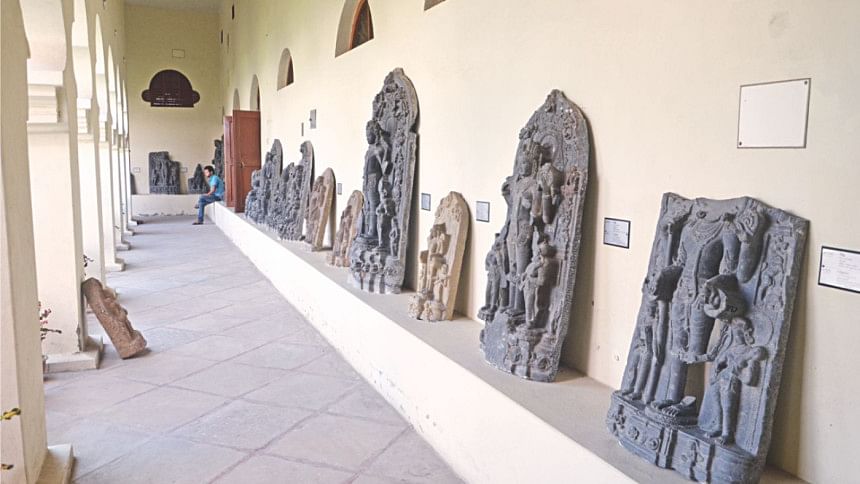The First Museum of Bangladesh

Photos: Anwar Ali
A century old single storey building, situated in the heart of the quaint Rajshahi city of Bangladesh, has been preserving some of the most precious artefacts of the world. Some of these are so rare, they can be found nowhere else on earth. The building is known as Varendra Research Museum. Established in 1910 by Prince Sharat Kumar Roy and two of his friends Akshay Kunar Maitreya and Ramprashad Chanda, it is considered to be the oldest museum of Bangladesh. The museum is currently maintained by Rajshahi University.

The museum boasts of a rich collection of 4100 ancient statues, 5000 very rare Puthis (ancient Bengali and Sanskrit manuscripts written on leaves or wood) and ancient documents, many of which have no other copy and are not translated yet.
There are six galleries in the museum. The first gallery is full of ancient inscriptions on stone in different languages. It showcases the largest Bengali stone inscription ever found. Written in ancient Bengali, the plaque, carved at the time of Laxman Sen, the last Bengali King, reveals the lifestyle of people of this land during 10th century.
The second gallery reveals the lost world of Indus civilisation, the first human civilisation of the Indian subcontinent. These 4000 years old pottery shards, statuettes, earthen and stone utensils were found in the ancient cities of Mohenjo-Daro and Harappa. These are the only artefacts of Indus civilisation exhibited in a Bangladeshi museum.
This museum is also famous for its amazing collection of ancient Buddhist and Hindu sculptures. The superbly carved stone sculptures Buddha and hundreds of Hindu deities not only highlight the craftsmanship of ancient Bengali artists, but also they reveal stories from the distant past. Pointing to three sculptures Muhammad Zakaria, deputy director of the museum says, “Look at these three statues of Buddha; here Buddha is seen wearing cloaks usually worn by the ancient Greeks and also his hairstyle and face pattern remind us of ancient Greek sculptures.”
“The explanation behind this mystery is that these statues are carved by the sculptors who learned the art of stone carving from the Greek artists who came to India with Alexander the Great during his campaign in 326 BC. These statues of Buddha are very rare,” adds Zakaria.

Besides these, different kinds of weapons used by the medieval warriors, decorated tiles and mihrabs (prayer niche) from ruined ancient mosques, Persian records and manuscripts are showcased in the museum. The museum also has a rich collection of ancient coins which includes punch-marked coins from Ashoka's period (304-232 BC), gold coins of Sultanate and Mughal period etc.

Despite of having such rich collection, Varendra Research Museum is a victim of sheer negligence and has always been excluded from the development budget. “The Government does not allot a single penny for the museum except the salary of the officials. We have a severe shortage of storage and maintenance facilities. We have 4100 statues, 5000 manuscripts and around 20,000 coins but we can display only 150 statues, around 50 manuscripts and several hundred coins,” says Dr Sultan Ahmed, director general of the museum.
“We have no equipment to preserve these precious artefacts. Currently we are preserving the manuscripts in wooden shelves which can be damaged anytime by changing temperature and termites,” he adds.
Thanks to the aid of around 1.5 crore Taka from the American Centre, the museum is currently undergoing some renovations but it is still very inadequate compared to the facilities it needs. Varendra Research Museum and its precious collections are our national treasures. If utilised in historical and archaeological research, the unexplored artefacts of this museum could rewrite the history of Bengal even the subcontinent.

 For all latest news, follow The Daily Star's Google News channel.
For all latest news, follow The Daily Star's Google News channel. 



Comments